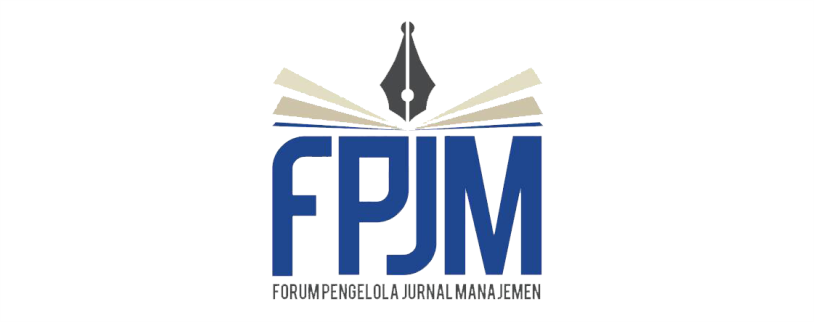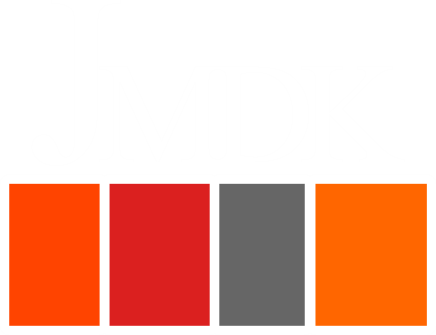Inovasi dan Daya Saing UMKM di Era New Normal: dari Triple Helix Model ke Quadruple Helix Model
DOI:
https://doi.org/10.26905/jmdk.v9i2.6718Keywords:
Competitiveness, Covid-19, Innovation, Quadruple Helix, Triple HelixAbstract
The role of MSMEs in the economic development of a country has important implications for increasing income, reducing unemployment, alleviating poverty and economic growth. The Covid-19 pandemic has had a negative impact and threatened the survival of MSMEs. This study aims to analyze the dynamics of the triple helix model by examining the role of each helix: universities, companies, and governments to help MSMEs rise from adversity. This study identifies behavioral profiles in terms of the performance of the triple helix model from the perspective of MSMEs and recognizes key factors for innovation success and competitiveness. The survey involved 134 MSMEs. The analysis method uses SEM-PLS with WarpPLS07. The results of the study indicate that there is a positive influence between the synergy of the government and academia in increasing the innovation and competitiveness of MSMEs. Innovation is able to become a mediator for the synergy of the government and academia in increasing the competitiveness of MSMEs. MSMEs need to be more active and proactive, the role of the government and academics still needs to be improved and coupled with the optimal role of other helixes, especially the community as a strategy to survive and thrive in the Covid-19 pandemic situation.
Downloads
References
Al-Tabbaa, O., Leach, D., & March, J. (2013). Collaboration between nonprofit and business sectors: a framework to guide strategy development for nonprofit organizations. Voluntas: International Journal of Voluntary and Nonprofit Organizations, 25(3), 657–678. https://doi.org/10.1007/s11266-013-9357-6
Awaluddin, M., Sule, E. T., Sucherly, & Kaltum, U. (2016). The influence of competitive forces and value creation on company reputation and competitive strategy: a case of digital creative industry in Indonesia with the implication on sustainable business performance. International Journal of Economics, Commerce and Management, IV(2), 201–234.
Beaver, G., & Hutchings, K. (2005). Training and developing an age diverse workforce in SMEs: The need for a strategic approach. Education and Training, 47(8/9), 592–604. https://doi.org/10.1108/00400910510633134
BPS. (2020a). Analisis Hasil Survey Dampak Covid-19 terhadap Pelaku Usaha.
BPS. (2020b). Berita Resmi Statistik.
Brink, T., & Madsen, S. O. (2016). The triple helix frame for small- and medium-sized enterprises for innovation and development of offshore wind energy. A Journal of University-Industry-Government Innovation and Entrepreneurship, 3(4), 1–23.
Campanella, F., Rosaria, M., Peruta, D., Bresciani, S., & Dezi, L. (2016). Quadruple helix and firms’ performance: an empirical verification in Europe. The Journal of Technology Transfer, 42(2), 267–284. https://doi.org/10.1007/s10961-016-9500-9
Carayannis, E. G., Barth, T. D., & Campbell, D. F. J. (2012). The quintuple helix innovation model: global warming as a challenge and driver for innovation. Journal of Innovation and Entrepreneurship, 1(1), 1–12.
Carayannis, E. G., & Campbell, D. F. J. (2010). Triple helix, quadruple helix and quintuple helix and how do knowledge, innovation, and the environment relate to each other? International Journal of Social Ecology and Sustainable Development, 1(1), 41–69. https://doi.org/10.4018/jsesd.2010010105
Chaminade, C., Vang-Lauridsen, J., & Coenen, L. (2007). Learning from the Bangalore experience: the role of universities in an emerging regional innovation system. CIRCLE.
Chin, W. W. (1998). The partial least squares approach for structural equation modeling. In Methodology for Business and Management. Modern methods for business research. (pp. 295–336). Mahwah, NJ, US: Lawrence Erlbaum Associates Publishers.
Clarke, A., & Crane, A. (2018). Cross sector partnerships for systemic change: systematized literature review and agenda for further research. Journal of Business Ethics, 150(2), 303–313. https://doi.org/10.1007/s10551-018-3922-2
Coenen, L., & Moodysson, J. (2009). Putting constructed regional advantage into Swedish practice. European Planning Studies, 17(4), 587–604.
Cucculelli, M., & Peruzzi, V. (2020). Innovation over the industry life-cycle. Does ownership matter? Research Policy, 49(1), 103878. https://doi.org/10.1016/j.respol.2019.103878
Dolz, C., Iborra, M., & Safón, V. (2019). Improving the likelihood of SME survival during financial and economic crises: the importance of TMTs and family ownership for ambidexterity. Cuadernos de EconomÃa Y Dirección de La Empresa, 22(2), 119–136. https://doi.org/10.1016/j.brq.2018.09.004
Etzkowitz, H. (2002). The triple helix of university - industry - government relations: implications for policy and evaluation. In SE-114 28.
Etzkowitz, H. (2014). The entrepreneurial university wave: from ivory tower to global economic engine. Industry and Higher Education, 28(4), 223–232. https://doi.org/10.5367/ihe.2014.0211
Etzkowitz, H., & Viale, R. (2010). Polyvalent knowledge and the entrepreneurial university: A third academic revolution? Critical Sociology, 36(4), 595–609. https://doi.org/10.1177/0896920510365921
Etzkowitz, H., Webster, A., & Healey, P. (1998). Capitalizing knowledge: University intersections of industry and academia. Albany: State University of New York Press.
Etzkowitz, H., & Zhou, C. (2007). Regional innovation initiator: the entrepreneurial university in various triple helix models. Triple Helix Conference VI in Singapore.
Eurostat. (2020). Eurostat new release.
Hair, J. F., Hult, G. T. M., Ringle, C. M., & Sarstedt, M. (2017). A Primer on Partial Least Squares Structural Equation Modelling (PLS-SEM) (2nd Edition.). Thousand Oaks, California: SAGE Publications.
Halibas, A. S., Sibayan, R. O., & Maata, R. L. R. (2017). The penta helix model of innovation in Oman: an HEI Perspective. Interdisciplinary Journal of Information, Knowledge, and Management, 12, 159–172.
Ivanova, I. (2014). Quadruple helix systems and symmetry: a step towards helix innovation system classification. Journal of the Knowledge Economy, 5(2), 357–369. https://doi.org/10.1007/s13132-014-0201-z
Jasra, J. M., Khan, M. A., Hunjra, A. I., Ur Rchman, R. A., & Azam, R. I. (2011). Determinants of business success of small and medium enterprises. International Journal of Business and Social Science, 2(20), 869–872.
Kamunge, M. S., Njeru, A., & Tirimba, O. I. (2014). Factors affecting the performance of small and micro enterprises in Limuru Town Market of Kiambu County, Kenya. International Journal of Scientific and Research Publications, 4(12), 1–20.
Kang, K. N., & Park, H. (2012). Influence of government R&D support and inter-firm collaborations on innovation in Korean biotechnology SMEs. Technovation, 32(1), 68–78.
Kemenkopukm, K. K. dan U. K. dan ah-M. R. I.-. (2020). Rencana strategis kementerian koperasi dan usaha kecil dan menengah tahun 2020 - 2024.
Khouroh, U., Windhyastiti, I., & Handayani, K. (2019). Peran kebijakan pemerintah dalam memperkuat aliansi strategis dan meningkatkan daya saing ekonomi kreatif. Jurnal Manajemen Dan Kewirausahaan, 7(2), 205–224.
Kraus, S., Clauss, T., Breier, M., Gast, J., Zardini, A., & Tiberius, V. (2020). The economics of COVID-19 : initial empirical evidence on how family firms in five European countries cope with the corona crisis. International Journal of Entrepreneurial Behavior & Research, 26(5), 1067–1092. https://doi.org/10.1108/IJEBR-04-2020-0214
Laguna, N. E., & Duran-Romero, G. (2017). Science parks approaches to address sustainability: a qualitative case study of the science parks in Spain. International Journal of Social Ecology and Sustainable Development (IJSESD), 8(3), 38–55. https://doi.org/10.4018/IJSESD.2017070103
Lawton, S. H., & Bagchi-Sen, S. (2010). Triple helix and regional development:a perspective from Oxfordshire. Technology Analysis & Strategic Management, 22(7), 805–818.
Leydesdorff, L. (2012). The triple helix quadruple helix, an N-tuple helices: explanatory models for analysing the knowledge-based economy? Journal of Knowledge Economics, 3, 25–35. https://doi.org/10.1007/s13132-011-0049-4
Leydesdorff, L. (2012). The triple helix, quadruple helix, … , and an N -tuple of helices: explanatory models for analyzing the knowledge-based economy? Journal of the Knowledge Economy, 3(1), 25–35. https://doi.org/10.1007/s13132-011-0049-4
Leydesdorff, L., & Etzkowitz, H. (1996). Emergence of a triple-helix of university-industry government relations. Science and Public Policy, 23(5), 279–286.
Leydesdorff, L., & Zawdie, G. (2010). The triple helix perspective of innovation systems. Technology Analysis & Strategic Management, 22(7), 789–804.
Lombardi, P., Giordano, S., Farouh, H., & Yousef, W. (2012). Modelling the smart city performance. Innovation : The European Journal of Social Science Research, 25(2), 137–149. https://doi.org/10.1080/13511610.2012.660325
Machado, H. V., Lazzarotti, F., & Bencke, F. F. (2018). Innovation models and technological parks: interaction between parks and innovation agents. Journal of Technology Management & Innovation, 13(2), 104–114.
Mayr, S., Mitter, C., & Aichmayr, A. (2016). Corporate Crisis and Sustainable Reorganization : Evidence from Bankrupt Austrian SMEs. Journal of Small Business Management, 55(1), 108–127. https://doi.org/10.1111/jsbm.12248
Mulyaningsih, H. D. (2015). Enhancing innovation in quadruple helix perspective: The case of the business incubators in Indonesia. International Business Management, 9(4), 367–371.
Natário, M. M., Pedro Almeida Couto, J., & Fernandes Roque de Almeida, C. (2012). The triple helix model and dynamics of innovation: a case study. Journal of Knowledge-Based Innovation in China, 4(1), 36–54. https://doi.org/10.1108/17561411211208758
OECD, O. for E. C. and D. (2017). Enhancing The Contributions Of SMEs In A Global And Digitalised Economy (pp. 1–24). pp. 1–24.
OECD, O. for E. C. and D. –. (2020). Coronavirus ( COVID-19 ): SME Policy Responses.
Papadopoulos, T., Baltas, K. N., & Balta, M. E. (2020). The use of digital technologies by small and medium enterprises during COVID-19 : Implications for theory and practice. International Journal of Information Management, 55(Desember), 1–4. https://doi.org/10.1016/j.ijinfomgt.2020.102192
Peng, M. W., Wang, D. Y. L., & Jiang, Y. (2008). An institution-based view of international business strategy: a focus on emerging economies. Journal of International Business Studies, 39(5), 920–936. https://doi.org/10.1057/palgrave.jibs.8400377
Prajogo, D. I., & Ahmed, P. K. (2006). Relationships between innovation stimulus, innovation capacity and innovation performance. R&D Management, 36(5), 499–515.
Pugh, R. (2014). The good, the bad and the ugly: Triple helix policies and programmes in Wales. Riple Helix Association Annual Conference.
PWS. (2020). UK economic update Covid-19.
Ranga, M., & Garzik, L. (2015). From Mozart to Schumpeter: A Triple Helix System approach for enhancing innovation in the Salzburg region of Austria. In Austrian Council for Research and Technology Development (Ed.), Designing the future: economic, societal and political dimensions of innovation. Echomedia Buchverlag, Vienna.
Rao-Nicholson, R., Vorley, T., & Khan, Z. (2017). Social innovation in emerging economies: A National systems of innovation based approach. Technological Forecasting & Social Change, 121, 228–237. https://doi.org/10.1016/j.techfore.2017.03.013
Rapaccini, M., Saccani, N., Kowalkowski, C., Paiola, M., & Adrodegari, F. (2020). Navigating disruptive crises through service-led growth : The impact of COVID-19 on Italian manufacturing firms. Industrial Marketing Management, 88(May), 225–237. https://doi.org/10.1016/j.indmarman.2020.05.017
Roy, R., Lampert, C. M., & Stoyneva, I. (2018). When dinosaurs fly: the role of firm capabilities in the “avianizationâ€of incumbents during disruptive technological change. Strategic Entrepreneurship Journal, 12(2), 261–284. https://doi.org/10.1002/sej.1278
Sekaran, U., & Bougie, R. (2013). Research methods for business: A Skill-building approach (6th ed.). John Wiley & Sons, West Sussex.
Simo, G., & Bies, A. (2007). The role of nonprofits in disaster response: An expanded model of cross-sector collaboration. Public Administration Review, 67, 125–142. https://doi.org/10.1111/j.1540-6210.2007.00821.x
Sudiana, K., Sule, E. T., Soemaryani, I., & Yunizar, Y. (2020). The Development And Validation Of The Penta Helix Construct. Business: Theory and Practice, 21(1), 136–145.
Tuunainen, J. (2002). Reconsidering the mode 2 and the triple helix: a critical comment based on a case study. Science Studies, 15(2), 36–58.
Ucaktürk, A., Bekmezci, M., & Ucaktürk, T. (2011). Prevailing during the periods of economical crisis and recession through business model innovation. Procedia - Social and Behavioral Sciences, 24, 89–100. https://doi.org/10.1016/j.sbspro.2011.09.095
Ueasangkomsate, P., & Jangkot, A. (2017). Enhancing the innovation of small and medium enterprises in food manufacturing through Triple Helix Agents. Kasetsart Journal of Social Sciences, 1–9. https://doi.org/10.1016/j.kjss.2017.12.007
Van Tulder, R., Seitanidi, M. M., Crane, A., & Brammer, S. (2016). Enhancing the Impact of cross-sector partnerships four impact loops for channeling partnership studies. Journal of Business Ethics, 135(1), 1–17. https://doi.org/10.1007/s10551-015-2756-4
Wenzel, M., Stanske, S., & Lieberman, M. B. (2020). Strategic responses to crisis. Strategic Management Journal, (March), 7–18. https://doi.org/10.1002/smj.3161
Downloads
Published
Issue
Section
License
Authors who publish with this journal agree to the following terms:
(1)Â Copyright of the published articles will be transferred to the journal as the publisher of the manuscripts. Therefore, the author confirms that the copyright has been managed by the journal.
(2) Publisher of Jurnal Penelitian is University of Merdeka Malang.
(3) The copyright follows Creative Commons Attribution–ShareAlike License (CC BY SA): This license allows to Share — copy and redistribute the material in any medium or format, Adapt — remix, transform, and build upon the material, for any purpose, even commercially.












